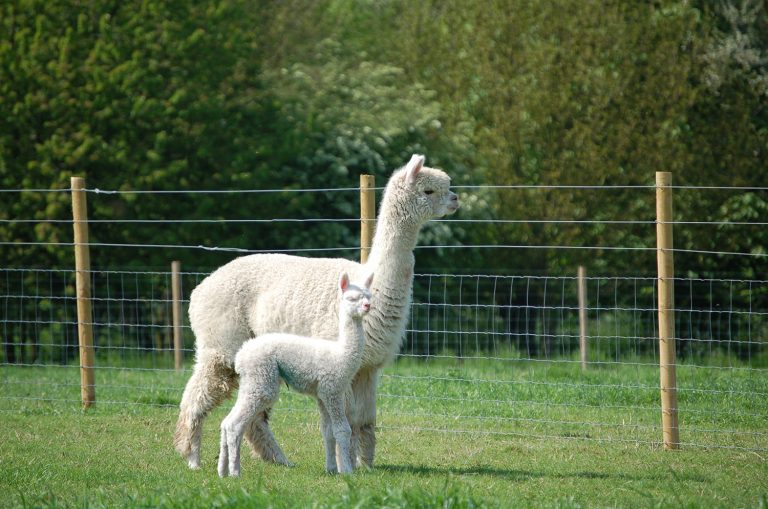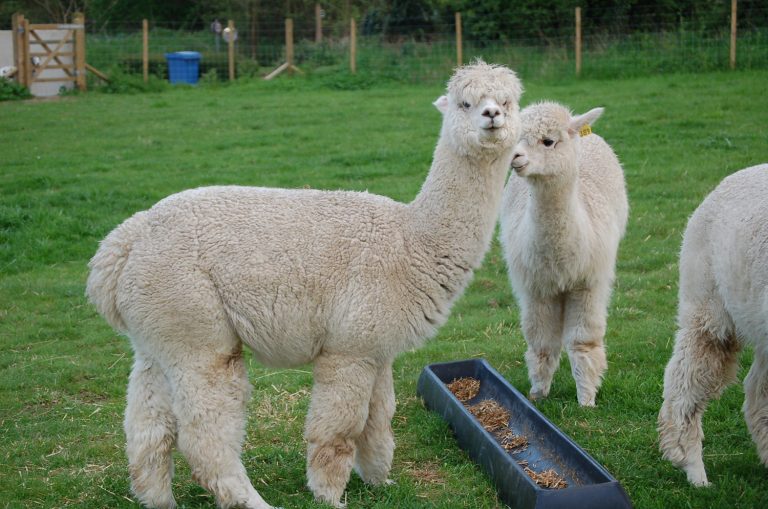How Much Pelleted Feed Should Alpacas Eat
Feeding Your Alpaca
Alpacas are popular as pets on small-holdings, as pack animals or even as large commercial herds for cria and fibre production. Alpacas are commonly praised for their kind nature and padded feet that do little damage to pasture.
Originally of the Andean civilisation, alpacas gained popularity amongst the Incas where their fibre was used to produce cloth worn exclusively by nobility. Alpaca fibre is often praised for its softness and quality and is considered second only to silk. Today, the popularity of alpaca fibre (wool) has expanded and although the main production lies within South America, alpaca fibre production is gaining popularity within the UK.
The Digestive System of the Alpaca
There are similarities between the digestive system of the alpaca and the ruminant including the ability to eructate and chew the cud. However, the alpaca stomach only has three compartments compared to four in ruminants, which means that alpacas are often classed as pseudo-ruminants.
The first two compartments are basically fermentation chambers where simple carbohydrates such as sugars and starch and more complex carbohydrates such as fibre are broken down by a microbial population to produce volatile fatty acids (VFAs) which can be used as an energy source by the host animal. In contrast to ruminants, the first compartment of the stomach is not lined with papillae but with gastric pits that produce digestive enzymes and buffers to aid microbial fermentation. The third compartment, also referred to as the true stomach, is where enzymes and acids are produced for digestion of feed.
Fibre is fermented relatively slowly with highly lignified (woody) feeds such as straw, taking several days to break down. In contrast, sugars and starch are fermented very rapidly resulting in a sudden increase in VFAs, which increases the acidity in the stomach. This is known as acidosis and can impair the efficiency of, or kill certain beneficial bacteria in the stomach. The effect of this on the alpaca can be very serious ranging from loss of appetite to diarrhoea and in severe cases death.
What Should Alpacas Eat?
The nutrient requirements for camelids including alpacas are largely unknown as limited research has been conducted. Most estimates are based on extrapolations for the nutrient requirements of ruminants particularly goats and sheep. Alpacas weigh between 45kg-80kg and can consume between 1.8%-2% dry matter of their bodyweight daily. For an alpaca that weighs 63kg this would equate to between 1.13kg-1.26kg dry matter daily. Alpacas have evolved to eat a fibre-based diet and their digestive system is most efficient and healthy when their ration is based on fibre.
The most common feeding strategy for alpacas is grazing supplemented with additional hay and at times of higher energy demand such as the winter months, during pregnancy and lactation, additional cereal concentrate rations are provided. Although cereal concentrates provide the extra calories needed, they may cause problems within the digestive system including gastric ulcers, colic and acidosis. Alternatives to using cereals include alfalfa, a quality source of fibre that is very low in starch.
Alfalfa for Alpacas
Alfalfa is a member of the legume family that also includes soya, peas and beans. Legumes are known for being a good source of quality protein and alfalfa is no exception. It is also rich in naturally occurring vitamins and minerals but contains very little starch so is useful for avoiding digestive problems.
Dengie is the largest producer of alfalfa-based feeds in the UK and although they are marketed primarily for horses, they can and are used for a wide range of other animals including camelids. The Alfa-A range is based on pure alfalfa with different coatings whereas the Hi-Fi range combines alfalfa with other fibre sources such as straw and grass.
Generally, the Hi-Fi range with its lower energy values, are ideal for alpacas that maintain their weight with ease. For alpacas with increased energy requirements such as those that are kept for breeding, Alfa-A Original or Alfa-A Lite may be more appropriate. Alfalfa Pellets are also suitable for alpacas and are particularly convenient for feeding outside.
 Breeding Alpacas
Breeding Alpacas
The gestation period for alpacas is around 350 days and is divided into three trimesters. During the first two trimesters the female alpaca can be fed on maintenance rations and no additional energy should be required. However, she is likely to need a balanced diet of essential vitamins and minerals. A camelid vitamin and mineral supplement or balancer provides very little additional energy and is an ideal way to provide a balanced diet.
The last trimester is when most of the foetal growth occurs and this, as well as during lactation, is when the energy requirements of the female will increase. At this stage, traditional feeding advice would be to offer up to 1kg of cereals per day, however a healthier option would be to use a feed from the Alfa-A range instead.
Suggested ration
- Ad lib hay or grazing
- Between 100 – 250g/day of Alfa-A Original / Alfa-A Lite / Alfalfa Pellets
- Camelid balancer at the recommended quantity
Once the young cria is born it will initially rely on its mother's milk for colostrum and nutrition. As it gets older it will gradually copy its mother and start grazing but it is several months before it can utilise grass as an energy source efficiently. The cria is usually weaned at 4-6 months of age and would require a similar ration to the one described above.
 Alpacas and Fibre (Wool) Production
Alpacas and Fibre (Wool) Production
An adult alpaca can produce 3-4kg of fibre per year with 22 basic colours available that can then be spun for fibre and knitwear. In the UK, the predominant type of alpaca is the Huacaya type that is a stocky animal with crimped dense fleece that is a fine, strong, hollow fibre. The other fibre type is the Suri whose fibre hangs in silky ringlets.
The quality and suitability for spinning of the fibre produced is predominantly determined by genetics but nutrition also has a very important role to play. Although protein generated from microbial fermentation in the stomach may meet requirements for low fibre production, it is likely to be inadequate to generate high fibre yields. It is the quality of the protein that is important rather than just the quantity. The quality of a feedstuff's protein is determined by the proportion of essential amino acids it contains; essential amino acids are those that have to be supplied in the diet. For fibre production the essential amino acid methionine is particularly important as are the minerals calcium and zinc and the vitamin biotin. Alfalfa is a fibre source that provides good levels of all these nutrients.
Suggested Ration at Maintenance
- Ad lib hay or grazing
- Hi-Fi Original / Hi-Fi Lite / Hi-Fi Senior between 100 – 250g as a bucket feed
- Camelid balancer or vitamin and mineral supplement at the suggested rate
Dengie's Hi-Fi range of fibre feeds may alternatively be used as a hay replacer if required.
For help and advice on feeding Alpacas please call 01621 841188.
Photo's are courtesy of Melford Green Alpacas. If you would like more information on Alpacas you can contact them at www.melfordgreenalpacas.co.uk
holtermannupoester.blogspot.com
Source: https://www.dengie.com/news-articles/feed-advice/feeding-your-alpaca/
0 Response to "How Much Pelleted Feed Should Alpacas Eat"
Post a Comment